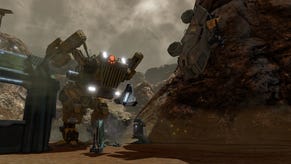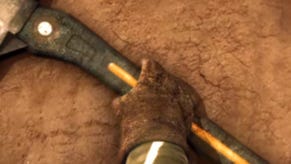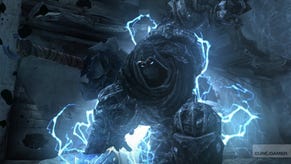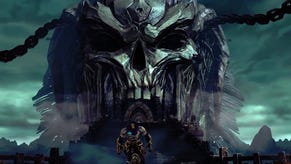Red Faction: Guerrilla
Small town riot.
The tech is effortlessly stunning, far ahead of anything offered by competitors like Fracture and Battlefield: Bad Company. But most importantly, Volition has nailed the feel of destruction: simply assaulting a concrete wall with a sledgehammer - your default, and devastatingly effective, weapon - is a cathartic delight with palpably satisfying impact. If, like me, you've fantasised about rampaging through the crockery section in Ikea with a hammer, this must be as close as a standard joypad can get to how you'd imagine it to feel.
Objects disintegrate in a remarkably realistic manner. So much so, that a basic recognition of the laws of physics helps, as I discover having torn through the walls of a building from the inside, only for it to collapse on top of me.
There is method to the mayhem. To recap on the story, Red Faction: Guerrilla is set 50 years after the events of the original. Back on Mars (RFII was Earth-based), you play Alec Masson, a miner who travels to the Red Planet to work with his brother. The Earth Defence Force, liberator of the original, has since turned State aggressor and declared martial law. "Free Mars is over," you're told during an introductory cut-scene. Suffice to say, something bad happens and you are quickly recruited into the resistance to fight back against the EDF.
Guerrilla is split into six large areas, the goal being to drive the EDF from each, and ultimately free Mars. You start each section from a safehouse, where you can change your weapon loadout, upgrade equipment (by trading in salvage collected in the wake of destruction), hop into a vehicle, or start a new mission.
As this is an open-world game, it's pretty much up to you what you do and where you go. A map details the various missions and side-activities available to you: your focus is to destroy EDF-guarded areas and complete missions linked to the main plot.
Side activities, like Demolitions Master, aren't essential, but help to build skills as well as being entertaining diversions. An enjoyable early example sees you having to destroy a building against the clock using only a pistol and hydrogen tanks. The tanks must be carried and positioned strategically so that when you blow them up with a well-aimed shot, they take out a key part of the structure.
A more simplistic example comes with shooting down metal towers from a gun emplacement, again against the clock. It's relatively dull, in truth, but the point is that Volition is promising variety in gameplay throughout - essential if the single-player is to last the 18-20 hours claimed for it.
Two things you'll want to keep your eye on are civilian morale and EDF control. The latter depletes, naturally, as you complete more missions; the former introduces an interesting dynamic whereby the higher the morale, the more likely you are to be aided in missions and raids by NPCs. Morale builds the more you strike back at the EDF (including destroying propaganda-spouting signage), but takes a dive every time a rebel is killed.
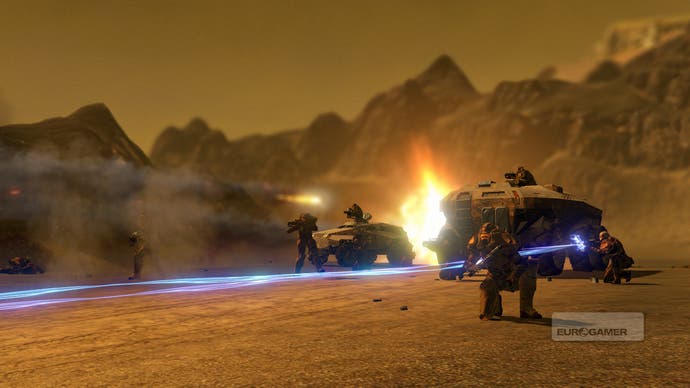
Vehicles come in various shapes and sizes, from the sluggish and dangerously exposed, to the nimble and formidably armoured. One of the great joys of Red Faction: Guerrilla is whizzing around on wheels, be it just smashing into structures and other vehicles, or weaving in and out of serpentine canyons while pursued by raging EDF forces.
The most thrilling moment of my few hours with the single-player comes during the final mission of the first area, Parker. To facilitate your faction's escape to a new location, you must distract the EDF, which you do by hopping behind the wheel and rampaging across the environment, tasked with knocking out a number of communication arrays.

